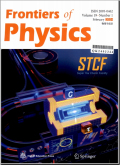Localized surface plasmon resonance enhanced photodetector: Physical model, enhanced mechanism and applications
Localized surface plasmon resonance (LSPR) is an intriguing phenomenon that can break diffraction limitations and exhibit excellent light-confinement abilities, making it an attractive strategy for enhancing the light absorption capabilities of photodetectors. However, the complex mechanism behind this enhancement is still plaguing researchers, especially for hot-electron injection process, which inhibits further optimization and development. A clear guideline for basic physical model, enhancement mechanism, material selection and architectural design for LSPR photodetector are still required. This review firstly describes the mainstream understanding of fundamental physical modes of LSPR and related enhancement mechanism for LSPR photodetectors. Then, the universal strategies for tuning the LSPR frequency are introduced. Besides, the state-of-the-art progress in the development of LSPR photodetectors is briefly summarized. Finally, we highlight the remaining challenges and issues needed to be resolved in the future research.
localized surface plasmon resonance、photodetector、plasmonic nanomaterials、hot electron
19
2024-09-26(万方平台首次上网日期,不代表论文的发表时间)
共1页
63501







